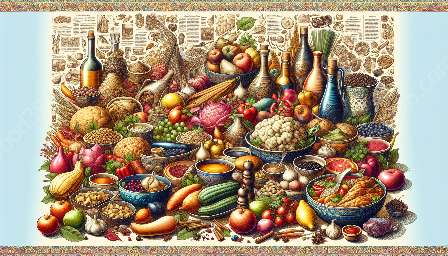Early agricultural communities played a crucial role in the development and dissemination of staple crops, which significantly shaped the evolution of food cultures. This article explores the significance of staple crops, their cultivation practices, and the impact on early food cultures.
Origin and Evolution of Food Culture
The origin and evolution of food culture can be traced back to early agricultural practices and the domestication of staple crops. As humans transitioned from hunter-gatherer societies to settled agricultural communities, the cultivation of staple crops laid the foundation for the development of food culture. The availability of staple crops such as wheat, rice, maize, and potatoes provided a reliable source of sustenance, enabling communities to establish stable food cultures.
Early Agricultural Practices and the Development of Food Cultures
Early agricultural practices revolved around the cultivation and harvest of staple crops. The introduction of agricultural techniques such as irrigation, crop rotation, and seed selection facilitated the mass production of staple crops, leading to surplus food production. This surplus allowed for the development of complex food cultures, as communities could focus on diversifying their diets, experimenting with cooking methods, and creating unique culinary traditions.
Significance of Staple Crops
Staple crops held immense significance in early agricultural communities, serving as the primary source of energy and nutrients. Wheat, for example, was a staple crop in ancient civilizations such as Mesopotamia and Egypt, where it formed the basis of daily sustenance in the form of bread. Likewise, rice played a pivotal role in Asian cultures, shaping culinary practices and dietary preferences. The cultivation of staple crops also influenced social and economic structures, as surplus production allowed for trade, specialization, and the emergence of complex societies.
Cultivation Practices
The cultivation of staple crops involved a range of practices, including land preparation, sowing of seeds, crop maintenance, and harvesting. Different regions developed unique agricultural techniques suited to their climates and soil conditions. For instance, the terrace farming system in the Andes enabled the cultivation of quinoa and potatoes at high altitudes, showcasing the adaptive nature of early agricultural communities.
Conclusion
Staple crops were foundational to the development of early agricultural communities and played a pivotal role in shaping food cultures. The cultivation and consumption of staple crops influenced social structures, economic systems, and culinary traditions, laying the groundwork for the diverse food cultures we encounter today.


